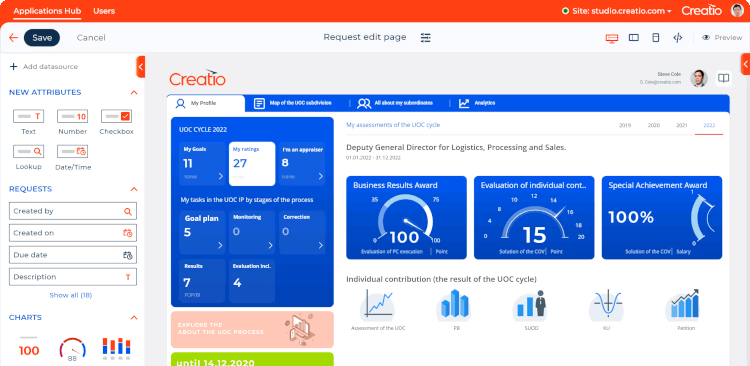Produce Open Platform Databases Easily with the Best No-Code Tools Available
Produce Open Platform Databases Easily with the Best No-Code Tools Available
Blog Article
Discover How Scalable Data Sources Can Be Used Without Coding to Enhance Your Service Workflow
In today's busy business atmosphere, the capability to manage and examine data effectively is critical. no-code. Scalable data sources, particularly when paired with no-code services, offer a transformative method that empowers non-technical users to streamline operations.
Understanding Scalable Databases
Scalable data sources are vital for modern service procedures, enabling companies to effectively manage boosting volumes of data without giving up performance. These databases are created to adapt and grow to the altering needs of a business, making sure that they can take care of larger datasets and even more complex inquiries as organizational demands develop.
Understanding scalable data sources involves acknowledging their two key kinds: vertical scaling and horizontal scaling. Upright scaling, or "scaling up," entails including even more power (CPU, RAM) to an existing server to boost efficiency. Conversely, horizontal scaling, or "scaling out," requires adding a lot more web servers to disperse the lots, which usually causes better versatility and mistake tolerance.
One more essential element is the architecture of scalable databases, which can be either relational or non-relational. Relational databases, such as MySQL and PostgreSQL, are structured and utilize SQL for questions, while non-relational databases, like MongoDB and Cassandra, supply more adaptability with unstructured information.
Ultimately, understanding scalable databases is important for companies intending to utilize information as a critical asset, enabling them to stay affordable in a progressively data-driven setting.

Benefits of No-Code Solutions
Opening the potential of no-code services encourages companies to streamline operations and enhance efficiency without the need for comprehensive programs knowledge. These platforms allow non-technical users to develop, modify, and take care of data sources effortlessly, thus equalizing access to innovation throughout teams.
One of the key benefits of no-code services is their rate of application. Businesses can promptly deploy applications and automate procedures, significantly lowering the moment spent on development cycles. This agility allows companies to react promptly to market modifications and customer demands, fostering a competitive edge.
Furthermore, no-code platforms decrease reliance on IT departments for day-to-day jobs, allowing technical groups to focus on even more complex tasks that require specialized skills. This change not only maximizes resource allocation however likewise promotes development within the organization.
Cost-effectiveness is an additional advantage, as no-code services can reduce growth and upkeep costs. By reducing the need for coding expertise, firms can harness the capacities of their existing labor force without the expenses of hiring added personnel.
Popular No-Code Data Source Equipment
The surge of no-code options has actually caused the introduction of various data source tools that cater to companies looking for efficiency and accessibility. These tools encourage individuals with limited technological expertise to create, take care of, and control databases effortlessly.

Caspio sticks out for its capability to develop internet applications with no coding. It allows companies to develop durable data sources and deploy applications quickly, dealing with numerous market needs. Propensity provides powerful information and straightforward user interfaces monitoring capacities, making it possible for companies to develop custom applications customized to their workflows.

Use Cases in Business Operations
Exactly how can companies leverage database tools to enhance their procedures? Scalable data sources offer organizations with powerful capabilities to handle and examine information without the demand for extensive coding understanding. These tools can improve different company processes, ultimately leading to improved effectiveness and performance.
One popular use instance is customer relationship monitoring (CRM) Organizations can utilize scalable data sources to track consumer interactions, preferences, and feedback, enabling personalized interaction and much better service. By systematizing this information, groups can team up better and react to client demands in real-time.
One more helpful hints more significant application is stock management. Firms can employ no-code data source devices to keep an eye on stock degrees, track shipments, and forecast need. This guarantees optimum inventory degrees, decreases waste, and minimizes stockouts.
In addition, job monitoring can gain from scalable data sources by allowing groups to manage jobs, due dates, Going Here and resources in a merged platform. With real-time updates and information visualization, task supervisors can make informed choices.
Beginning With Execution
Carrying out scalable databases in service operations needs an organized strategy to guarantee successful integration and use. The initial step is to carry out an extensive demands assessment, determining certain organization needs, data types, and expected development patterns. This fundamental understanding will certainly guide the selection of the suitable database option.
Following, pick a straightforward, no-code database platform that aligns with your operational objectives. no-code. Several modern solutions use instinctive user interfaces, allowing non-technical individuals to take care of information properly. After selecting a platform, establish a clear data design that details just how information will be organized, accessed, and preserved
Training is vital; make certain that employee are equipped with the necessary skills to utilize the data source. Consider supplying workshops or tutorials to familiarize staff with the system's functionalities.
Conclusion
In conclusion, the integration of scalable databases through no-code services provides significant benefits for organization procedures. Eventually, leveraging these modern technologies can lead to boosted efficiency and operational performance, positioning businesses for sustained growth in an affordable landscape.
One popular no-code database device is Airtable, which combines the capability of a spreadsheet with the power of a data source.How can organizations take advantage of data click resources source tools to boost their operations? Businesses can make use of scalable databases to track customer interactions, choices, and comments, allowing individualized communication and far better solution.Executing scalable data sources in service operations calls for a structured method to guarantee effective combination and usage.In conclusion, the integration of scalable data sources with no-code services presents substantial advantages for business operations.
Report this page